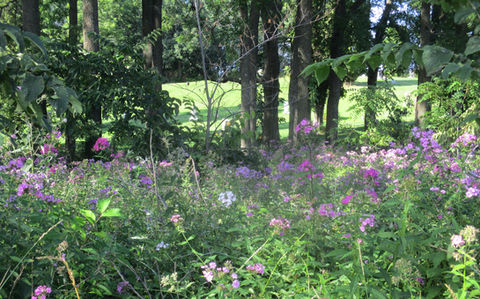_edited.jpg)

WELCOME
The Hay River Karma Thegsum Chöling (KTC) Buddhist Meditation Center
welcomes all people regardless of culture, ethnicity, skin color,
sexual orientation, politics, or other differences.
We are a place of peace, respect, and community.
Service animals are welcome.
History of Hay River KTC
The Hay River KTC property in Ridgeland, WI has two buildings: Lama Yeshe’s house and the Shrine Room.
The Shrine Room
In 1977, Lama Yeshe built the brick building that now houses the Shrine Room. Before becoming a Buddhist monk, he used the building as a workspace. The top floor served as his shop for a reupholstery business and the bottom floor had a woodshop and his farm equipment repair shop. At one time he restored antique John Deere tractors as a hobby.
In 2000, the building was remodeled and repurposed as Hay River KTC’s Buddhist Meditation Center. The wood addition on the right was completed a few years later.
The House
The house was built around 1890 and purchased by Lama Yeshe in 1971. In addition to being Lama Yeshe’s residence, the house also serves as a place for Hay River KTC visitors to gather and eat meals. Much of the woodwork in the house, including the kitchen cabinets, came from wood sustainably harvested on the property.
About Our Buddhist Meditation Center

April 2025: Please note, our donation page is currently offline.
To make a donation, contact Lama Yeshe at 108yeshe108@gmail.com


The Grounds
As the property owner, Lama Yeshe serves as steward to the woodlands on the property. Hay River KTC is set on 13 acres. Visitors are encouraged to stroll through Hay River KTC’s forest.
The forest is full of mature trees. The oldest is a Red Oak (below) that is 13 1/2 feet in circumference at chest height. This tree is approximately 200 to 300 years old, predating the area’s European settlers.
Note that the Red Oak branches out close to the ground, indicating it began life in the open, not in a forest. Many of the old oak trees on the land are like this. In contrast, a forest-grown tree has tall trunks before branching out. This indicates the ecosystem before settlement by farmers was open grassland with oak groves.


GALLERY
Click on any of the photos below to learn more about the Hay River KTC and Lama Yeshe.


Land Acknowledgement
The Hay River KTC wants to acknowledge the Native American residents of the land the Center occupies. When Europeans first contacted native Americans in this area it was because of the fur trade. At that time the Santee Dakota (Sioux) tribe lived in this area.
As Europeans pushed westward in Wisconsin the Ojibwa (Chippewa) were pushed toward the Dakota causing conflicts. The last battle between the two tribes occurred in 1855 and was located 4 miles away from the Center. The first purchase of the land by a person of European descent was in 1868. Today there are ancient red and white oak trees that were alive well before 1868 that give testimony to the landscape when the Dakota lived here.









